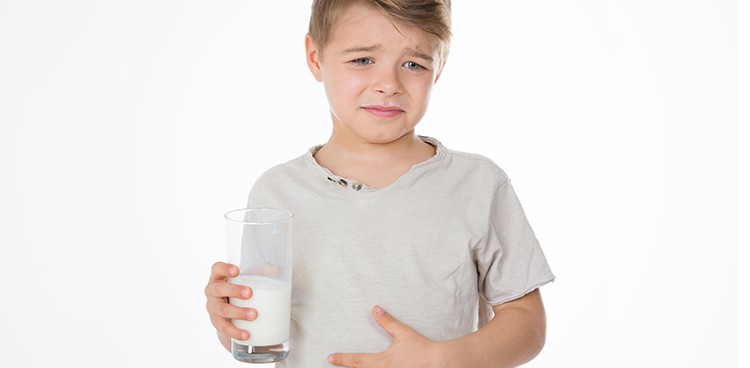
In this blog series, registered dietitian Marissa Donovan gives you the scoop on the latest nutrition science surrounding cheese. From the farm, to the store, to your kitchen, she’s got you covered on what you need to know about cheese and your health. Read on to learn more!
Everyone loves a sprinkle of fresh parmesan on top of pasta, or a nice grilled cheese sandwich, but for some, enjoying cheese may not be so, well, enjoyable. Those with lactose intolerance have difficulity when eating certain dairy products, including cheese. Lactose intolerance is a sensitivity to milk and milk products, causing symptoms like bloating, diarrhea, and gas after eating or drinking dairy. This condition is caused by a shortage of lactase—an enzyme—necessary for the body to digest lactose—a sugar found in milk. A shortage of this enzyme leads to poor absorption of lactose, causing the milk sugar to go straight to the colon. When the colon tries to break down lactose, it creates extra fluid and gas—causing discomfort. Lactose intolerance is not the same as a milk allergy. A milk allergy involves the body’s immune system reacting to the protein found in milk. One of the dangers of lactose intolerance is not getting enough of the essential nutrients offered in dairy, including calcium and vitamin D.
While it may seem like lactose intolerance doesn’t affect many people, often times people do experience it to some degree. About 65% of the population has trouble digesting lactose after infancy, according to the U.S. National Library of Medicine. There are different types of lactose intolerance. The most common type—primary lactose intolerance—occurs when your body stops making lactase after childhood, making if hard to digest dairy as an adult. Secondary lactose intolerance occurs when lactase production drops after an injury, surgery, or illness (such as celiac or Crohn’s). Treating the underlying condition can usually reduce the degree of, or completely eliminate, secondary lactose intolerance. Most rare is congenital/developmental lactose intolerance—when you are born with lactose intolerance. This condition is inherited from both parents and results in a baby that doesn’t produce lactase. These babies cannot digest dairy, including breast milk and certain formulas. Developmental lactose intolerance sometimes occurs, also, when a baby is born premature, without enough lactase.
If you experience symptoms of lactose intolerance, talk to your doctor and a registered dietitian to figure out which dairy foods are best for you, and if you need a lactase supplement (these helps some people digest lactose). In general, most people with this condition can have at least some dairy without having symptoms. Which is good news: you can have your cheese and eat it too!
Eat cheese with crackers or other non-dairy snacks—people tolerate dairy better when it is eaten with other food. Eating smaller servings of dairy throughout the day instead of a large amount at once can also help decrease discomfort.
Hard, aged cheeses generally have lower lactose levels—because much of the lactose-containing whey is drained off—these will be easier to digest. Examples of good cheese choices include cheddar, Colby, Swiss, parmesan, Monterey Jack, aged mozzarella, Gruyère APO, blue, pecorino, asiago, and other aged cheeses.
Fresh, non-aged cheeses will likely upset the stomach of someone with lactose intolerance. Steer away from cheeses like fresh mozzarella, cottage cheese, ricotta, queso fresco, paneer, and other soft cheeses.
If you have more questions, the National Dairy Council is a great resource. They also launched a new website specifically for those with lactose intolerance, check out the site for more information, lactose intolerance resources, recipes and more! Also check out culture’s helpful infographic about lactose intolerance and cheese, plus information about lactose in goat cheese.
Next week, we’ll be diving into the newest science about milk, which is best for you: full-fat or fat-free?, organic or conventional? Stay tuned to find out!
Feature Photo Credit: “Child…” by Dave Pot | Shutterstock



